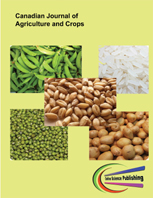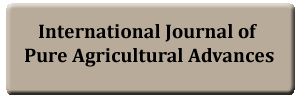Comparative analyis of cost and return of improved cassava production in Awka South LGA, Anambra State, Nigeria
DOI:
https://doi.org/10.55284/cjac.v8i1.863Keywords:
Adopter and non-adopters, Cassava production, Cassava varieties, Cost and returns, IITA, Profitability.Abstract
IITA developed several new varieties during 1976-1985 for the benefit of cassava farmers. The study had four specific objectives which described the socio-economic characteristics of the cassava farmers, identify the perception of cassava farmers on the IITA improved varieties, ascertain the cost and profitability of cassava production and the constraints faced by the farmers. A multi stage and purposive sampling method was used in the selection of 100 respondents, 50 adopters and 50 non-adopters of IITA intervention in the study area. A structured questionnaire was used to collect data from the respondents and these data were analyzed using gross margin, likert and descriptive analysis (frequency, percentage and mean). The result showed that majority of cassava farmers in the study area were male and majority of them were married. The mean farm size was 1.8ha which implied that production was in a small scale in the study area. The result also revealed the net return for adopters was N230,800 and N146,000 for non-adopters, which denoted that cassava production was more profitable to the adopters of the improved cassava varieties. The result further revealed that the inadequate information on availability of planting materials was the main constraints faced by the cassava farmers. This study concluded that the International Institute of Tropical Agriculture (IITA) improved cassava varieties increased the profitability of cassava production. Therefore, it is recommended that extension agents should train and encourag farmers to use IITA varieties to increase their profitability in the study area.


